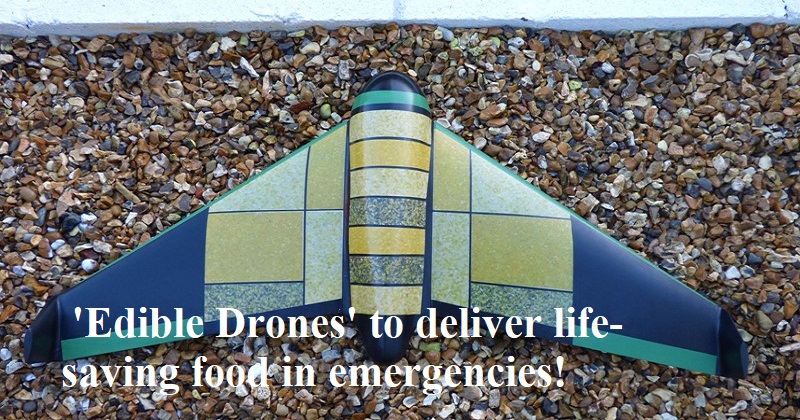
Drone-like aerial platforms have proven to be very helpful for unmanned food and water delivery in emergency situations. The payload capacity of a drone, a tiny aerial vehicle, is only 10 to 30 percent of its own mass. The Swiss Federal Institute of Technology, Lausanne (EPFL) research group has created a prototype for an edible drone to get around this restriction.
The drone’s fixed edible wings raise its mass ratio for transporting food to 50%. Project ‘RoboFood,’ which aims to create edible robots for both people and animals, includes the half edible airport. A report on the invention of the edible drone was recently presented at the IEEE/RSJ International Conference on Intelligent Robots and Systems (IROS) conference in Kyoto. The topic of the essay is ‘Towards edible drones for rescue missions: design and flying of nutritious wings’.
What is an Edible Drone?
This information is now intriguing. Following much investigation, the scientists came to the conclusion that puffed rice cakes adhered with gelatin would create the drone’s wings. Since rice cakes sold in stores are typically spherical, they are laser sliced into hexagons to make them simpler to assemble into the wings. The wing is covered in plastic and tape once the gelatin has dried to make sure it won’t degrade in moist or muggy conditions. With a 678 mm wingspan, the edible drone can deliver 300 kcal of nutrients through rice cakes and gelatin. The primary structural components of the edible wing were adhered together using edible glue, which offers a modest quantity of of nutrients – 200 kcal per 100 g.
The Benefits of Rice Cakes for Edible Drones;
- The choice of rice cakes for this idea was made after considering their many advantages.
- A rice cookie is made by puffing rice grains under high pressure and heat, which greatly reduces their weight in comparison to other culinary ingredients.
- Laser cutting may also be used to quickly manufacture a rice biscuit. A kilogramme of rice cookies contains 3870 calories.
- This is less caloric than chocolate and candy, but the densities of those foods are up to eight times higher than those of rice cookies, making them unsuitable for aerial delivery by drone.
- Moreover, rice cookies have nutritional values that are quite comparable to those of other typical meals like oats, barley, and pasta. However, rice cookies are less thick, making them a better choice for the edible-winged drone’s material.

Post Your Comments